Directors’ trademarks is a series of articles that examines the “signatures” that filmmakers leave behind in their work. For this iteration, we are examining the works of Sam Raimi as director.
Samuel Raimi was born on October 23rd 1959 in Royal Oak, Michigan. His fascination with film started at a young age and he often made his own films with the family’s 8mm camera. One of the friends he made films with at a young age was Bruce Campbell, which would form a working relationship for the rest of his career. In college, he released several short films and his feature length debut, 1977’s It’s Murder! Raimi dropped out of college to focus on making movies, and created Renaissance Pictures along with Bruce Campbell for that purpose. Together they were able to raise enough money to produce Raimi’s first professional feature length film, 1981’s Evil Dead.
Evil Dead was considered a “sleeper hit” and went on to lead video sales in the UK. It’s combination of comedy and grotesque violence was unheard of at the time, and helped to promote Raimi’s name in certain circles. His next film was 1985’s Crimewave, which was a difficult production and ended in failure at the box office. Raimi decided to go back to horror for his next film, and with help from Stephen King, was able to secure a higher budget for a sequel to Evil Dead. Evil Dead II released in 1987 and found some success at theaters, but more importantly grew Raimi’s cult following. For his next project, Raimi created his own superhero in 1990’s Darkman. This was his first major studio project, and performed well at the box office and received generally favorable reviews.
The success of Darkman opened up many new opportunities for Raimi, chiefly the opportunity to make a bigger budget sequel to Evil Dead. That film, 1992’s Army of Darkness was a flop in theaters, although it has since gained a strong cult following. During this period, Raimi also worked as an actor, having prominent roles in The Stand, Body Bags, and Indian Summer. His next film as director was a western; 1995’s The Quick and the Dead, was also a box office bomb, although it too has gained a cult following. His next film was 1998’s Simple Plan, which didn’t find much success in theaters, but is one of Raimi’s highest rated films. His next two films were 1999’s For the Love of the Game, and 2000’s The Gift. Both films received mixed reviews, although The Gift was successful at the box office.
Raimi’s next project as director was the trilogy of original Spider-Man films, with Spider-Man released in 2002, Spider-Man 2 in 2004, and Spider-Man 3 in 2007. All three films were huge hits at the box office, with the first film almost outgrossing all of Raimi’s previous output single-handedly. Critics and audiences loved the first two films. Negative critical response to the third film helped to limit studio interest in making a third sequel. In 2009 he returned to the horror genre with Drag Me to Hell, which was a critical and commercial success. In 2013 he released his most recent film as director, a prequel to The Wizard of Oz entitled Oz the Great and Powerful. This film was a smash hit in theaters, although critical opinion was not high. Raimi’s next film as director is the sequel to Doctor Strange, and will be released in 2022.
So the question posed is, if you are watching a Sam Raimi film and you don’t know it, what are the things to look for that would identify it as such? Here are five of Mr. Raimi’s trademarks as director, in no particular order:
Comic Book Come to Life
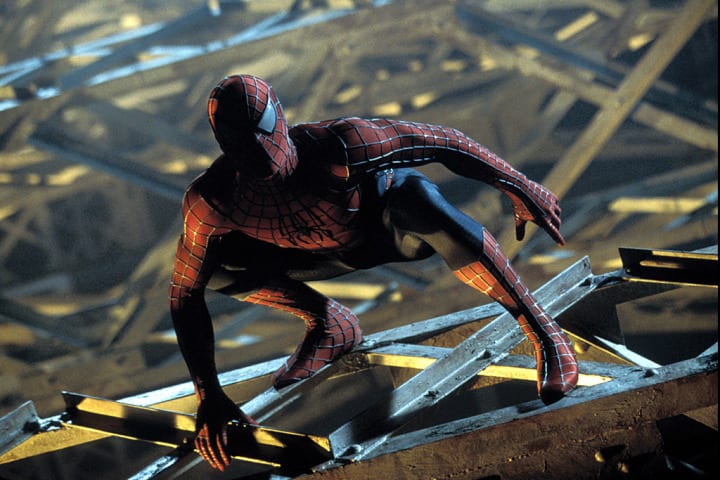
Sam Raimi is a big fan of comic books, and it shows in his films. Although he would go on to make a successful trilogy based on the famous Spider-Man comic, his earlier films had comic book tendencies, even if they weren’t exactly comic book material. It starts with Raimi’s aesthetic, which can be a bit goofy and over-the top. His characters often find themselves in near-slapstick action pieces. The reason for this is that Raimi is a huge fan of the Three Stooges. Taking from this inspiration, Raimi uses his camera to add an almost cartoonish vibe to his films. When the action picks up, look for tilted cameras, quick cuts, and blurred motion. His camera focuses on the body parts of his characters in these moments up close, rather than showing their entire body. He tends to look at their hands and feet, or else their eyes to mimic panels in a comic book outlining an exciting dynamic moment in print. His films can also be excessive to mimic the artistry of the comic form – either excessively violent, or excessively silly.
All three of the Evil Dead films are great introductions to this type of eccentricity. When the first film was released, it was considered excessively violent. But it was also goofy. Raimi’s early 8mm short films were slapstick comedies, but in one film he found how easy it was to make his audience react to a jump scare. This gave him the idea to combine horror with comedy. This blend of funny while intense was a novel concept at the time. This approach would be repeated in Drag Me to Hell. He took this idea one step further with his third official feature film, Crimewave, which is full of madcap action sequences – the most direct ode to the Three Stooges in his filmography. During the 1980’s Raimi tried to obtain the rights to make a film adaptation of the famous literary and comic hero, The Shadow. He was unsuccessful in these attempts, but it inspired him to create his own superhero, Darkman. This film can be considered an “unofficial” comic book movie. The Quick and the Dead allowed Raimi to bring his eccentric approach to the realm of westerns, where he created a film that mimicked the audacity of the spaghetti western.
As Raimi branched out to more dramas in the 1990’s, this aspect of his aesthetic became less pronounced. However, he carried through many of the same habits. In For the Love of the Game, his use of flashbacks interspersed between game action is not unlike the type of narrative one would expect to see in a comic book. In The Gift, we see his use of quick cuts and focus on movement to depict nightmares and psychic visions. Even in A Simple Plan, the few tense action moments are almost comical and slapstick. Raimi’s Spider Man trilogy would see the return of his comic-book fascination, but in a new, and slightly less direct manner. Still, his approach was a bit less serious, and the way he spliced together the action scenes in those films is more stilted than what we see in today’s modern equivalents – to help capture the spirit and the tone of the comic book he took his inspiration from.
Fade and Whip Cuts
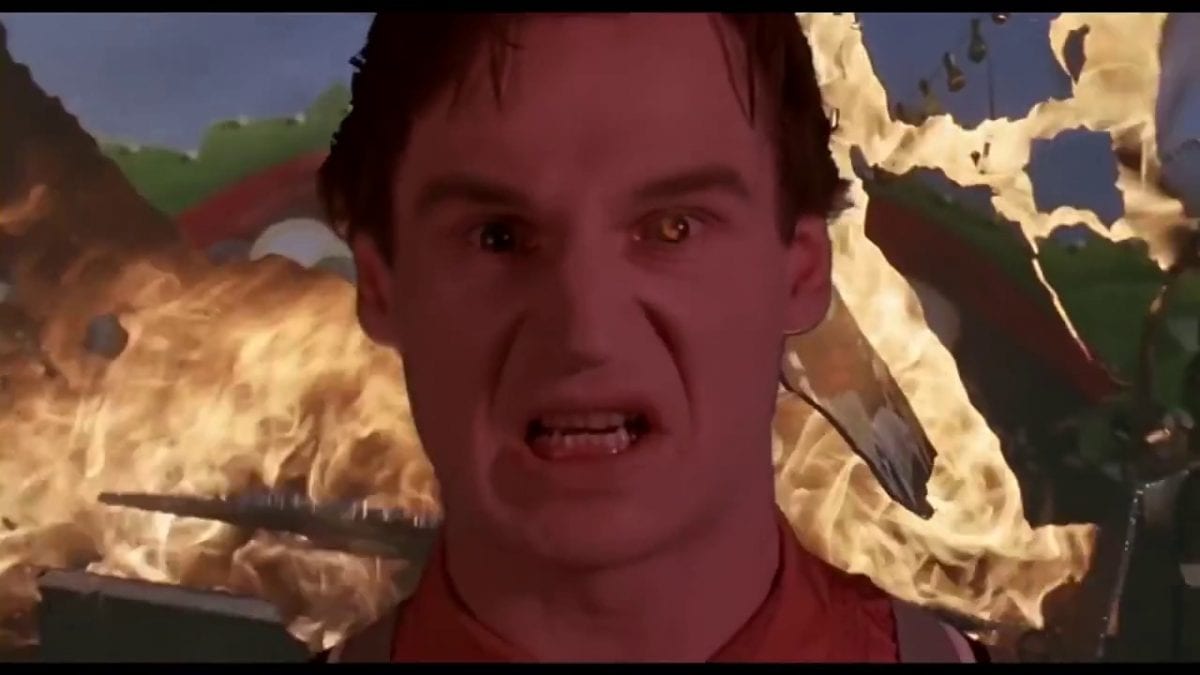
To accent his comic book-influenced style, Raimi loves to use cuts between scenes and clips where the picture appears to be in motion in some way. In comic books it is common to have motion blurs to depict action, or have elements of the drawings overlap the cells to direct the eyes of the reader. In Raimi’s films, his motion cuts accomplish the same thing but not only when there is action taking place. The most often place Raimi uses a fade cut is when he needs to make a narrative transition. In A Simple Plan, he uses this technique to show the passage of time. In The Gift, he uses the fade cut to illustrate a dream or a vision by the main character, Annie. In one such sequence, he overlays her eyes behind the picture and slowly fades them out, to make sure the audience understands we are witnessing one of her visions. The fades come quick in these sequences because Raimi is attempting to demonstrate the somewhat murky composition of dreams in the first place. Likewise, in films like The Quick and the Dead, he uses a fade to signify the end of a montage or a flashback.
When Raimi does use whip cuts for action sequences, the camera is often moving quickly to focus on a character’s face, to watch their expression to what has already taken place or what is going to happen next. In Spider Man 2, in the hospital scene just before Doc Ock escapes in a whirlwind of destruction, we see the reflection of one of his arms moving in the safety glasses of a doctor. Another doctor notices at the last second, and the camera zooms in on his eyes. Raimi transitions this into a whip cut from the arm’s point of view attacking the doctor. Seconds later, as the doctor crashes through a glass window, the camera propels itself through the shards, focusing on a screaming nurse. In Army of Darkness, when the witch comes back to life in the castle, Raimi uses the same sort of reaction shots blended with whip cuts to create chaos on screen. Another great scene showcasing Raimi’s use of whip cuts is the carnival scene in Darkman. Here, Dr. Westlake is getting angry, and Raimi moves the camera in close to his face to really bring in the audience’s attention. As he gets angrier and angrier, Raimi uses whip cuts to demonstrate the things that are making him upset. It is almost as if the film is tormenting the character, and the audience shares in the feeling of his annoyance ramping up.
Familiar Bad Guys
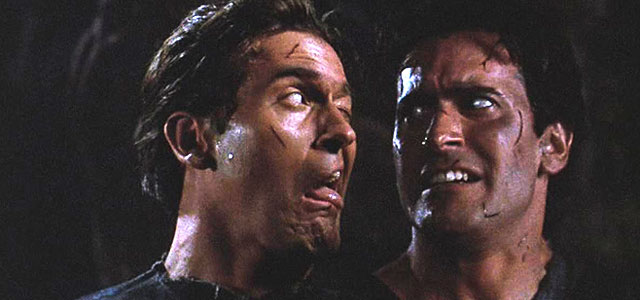
In most of Raimi’s films, the main antagonist is usually someone who is well known to the protagonist. It usually isn’t just some rando they run into on the street. Typically they have a friendship, look up to, or are like family with the person who does the most harm to the antagonist and their friends/family. In the original Spider Man, the Green Goblin turns out to be the father of Peter’s best friend Harry, and someone he looked up to. In the sequel, it is Peter’s mentor, Dr. Octavius who becomes the main antagonist, and in Spider Man 3, it is Harry himself who takes revenge on Peter. In The Gift, the mysterious murderer turns out to be Wayne Collins, a man the main character had trusted and is the principal at her children’s school. In A Simple Plan, the people that cause the biggest problem for Hank Mitchell’s plan to keep the treasure they find is his brother and his brother’s best friend (not to mention his own wife’s plans keep making their situation worse).
In some cases, Raimi’s familiar antagonists take it a step further; they are the protagonist also! In Spider Man 3, the alien symbiote infiltrates Peter Parker’s body and begins changing him into something evil. It causes Peter to fight with his best friend, assault people, and alienate Mary Jane. In Evil Dead 2, it is Ash’s own arm that turns against him when he has to cut it off after it “goes bad”. In Army of Darkness, the main antagonist is an evil mirror reflection of Ash, known as Bad (Ass) Ash, who raises an army of dead against him. In For the Love of the Game, the biggest obstacle to Billy Chapel’s performance is himself. In Darkman, our hero is able to create and wear new faces. He uses this ability to disguise himself as his enemies, taking advantage of them. There is a similar play on this phenomenon in Crimewave, where the main character is accused of being a vicious murderer, but through flashbacks Raimi reveals his innocence.
Time Keepers
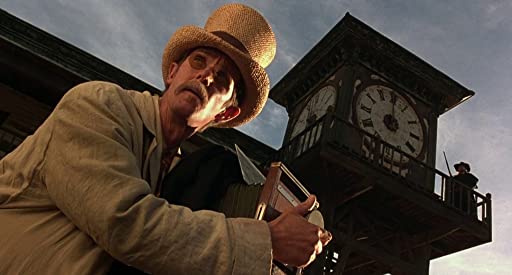
Clocks have a very important place in all of Raimi’s films. If he doesn’t explicitly show them on screen, he always has elements which are reminding us of the passage of time. He uses clocks to instil a sense of urgency into the plight of his characters. They serve as a reminder to the audience of what is at stake and help put them in the mindspace of the protagonist. The Quick and the Dead is perhaps the best example where the entire film basically revolves around the clock tower in the center of the town. Raimi focuses on it often, as the clock is used to announce the start of a competition, and it literally means life or death for the characters. In For the Love of the Game, it is the game clock counting down to zero which drives the narrative. As Billy reminisces about his past, the present moves forward one second at a time. As his performance becomes noteworthy, both the viewer and the fictional audience are waiting with baited breath for the game to be over and for Billy to achieve a perfect game as pitcher.
In the Spider Man films there are important action sequences that take place on clocks. In Spider Man 2, Spider Man battles Doc Ock at the top of a clock tower. In Spider Man 3 it is the chimes of the clock which disturb the symbiote and allow Peter to escape from its grasp. In The Gift, Raimi focuses often on the wrist watch worn by the main character. In fact, in his films taking place in modern times, a majority of Raimi’s characters can be seen wearing a wristwatch. In Darkman, Dr. Westlake is trying to develop a synthetic skin, but it does not hold its form for very long. The camera often looks at a computerized timer. In the Evil Dead movies and in Drag Me to Hell, it is a curse with a certain time limit which haunts the main characters. Raimi gives the audience reminders that time is running out. A Simple Plan has a similar approach as the three main characters are trying to not get caught with the money they found, and believe if they can just manage to go long enough without anyone suspecting them, they can take the money without repercussions.
“The Classic” & Bruce!
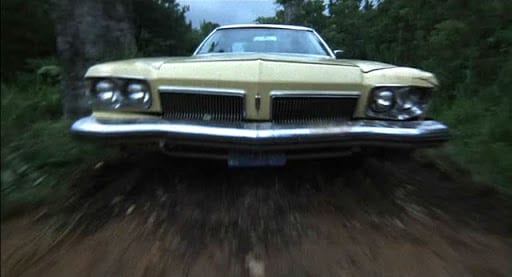
Like many directors, Raimi often collaborates with the same actors or crew on different films. However, in Raimi’s case, this collaboration goes a little further than typical. Sam Raimi and Bruce Campbell have been friends since high school. They began making movies together when they were young, and that working relationship has maintained. While they were in college, Raimi and Campbell created a short film which would be the inspiration for Evil Dead. They used this film to gather interest and raise funds for a feature version, and later founded a production company together called Renaissance Pictures. Campbell went on to star in Evil Dead, Evil Dead 2, and Army of Darkness, and had a major role in Crimewave. Many of Raimi’s other films feature Campbell in a cameo role, including all three Spider Man films, Darkman, a deleted scene in The Quick and the Dead, and in Oz the Great and Powerful. Bruce has also worked with Raimi on other films as a producer.
Another ‘character’ which makes a frequent appearance in Raimi’s films is his 1973 Oldsmobile Delta 33, which has been nicknamed “The Classic”. This yellow car made its debut in Evil Dead, becoming an important part of the narrative. The film returned in the sequel, and gets rebuilt as a battle tank in Army of Darkness. In Crimewave, the car is driven by a pair of assassins. In Darkman, the car makes a cameo appearance during an action scene when the titular hero is dangling from a helicopter and the pilot tries to crash him into a car. The car is, of course, “The Classic”, and the two people driving it are actually the Coen brothers, who helped Raimi with the script. The car is shown on the side of the street in A Simple Plan, is driven by the main character in The Gift, and is driven by Lady Ganush in Drag Me to Hell. In the Spider Man trilogy, it is Peter Parker’s aunt and uncle which drive “The Classic”. According to Raimi, the car is featured in The Quick and the Dead. It was disguised under a tarp as a wagon, and in Oz the Great and the Powerful they did the same thing. The car also had a scene in For the Love of the Game, but that scene did not make it into the final film.
Want more Directors’ Trademarks?

